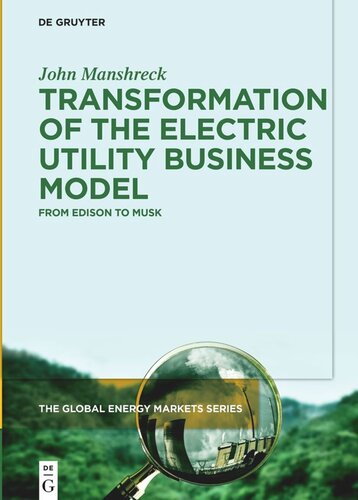

Most ebook files are in PDF format, so you can easily read them using various software such as Foxit Reader or directly on the Google Chrome browser.
Some ebook files are released by publishers in other formats such as .awz, .mobi, .epub, .fb2, etc. You may need to install specific software to read these formats on mobile/PC, such as Calibre.
Please read the tutorial at this link: https://ebookbell.com/faq
We offer FREE conversion to the popular formats you request; however, this may take some time. Therefore, right after payment, please email us, and we will try to provide the service as quickly as possible.
For some exceptional file formats or broken links (if any), please refrain from opening any disputes. Instead, email us first, and we will try to assist within a maximum of 6 hours.
EbookBell Team

4.3
18 reviewsThis book examines business model transformation through the study of electrical utilities, an industry at the center of today’s efforts to combat climate change. When change comes to the business model of such a mature industry, the pattern is often recognizable. The foundational elements of the industry shift, allowing the innovation of business models by new competitors, while established firms face the threat of disruption. The utility sector, after decades of relative stability, is in the midst of such a transformation today.
After providing a historical summary of the dominant business models of the utility sector, Transformation of the Electric Utility Business Model looks at the factors currently impacting the industry. Utilities and policy makers today are facing two long-term issues that will dominate their agendas in the coming decades: rebuilding utility infrastructure to enable the decarbonization of the economy, and managing the risk of catastrophic events that can leave large areas without power for extended periods. Fortunately, with proper planning, many utility investments in decarbonization will also support risk management. However, these investments are often not compatible with current utility business models, requiring creativity and new regulatory frameworks to successfully implement. This book considers the impact of these factors, and then discusses the future.
This well-researched, extremely insightful book is essential reading for all those with an interest in business strategy, energy studies and sustainability.